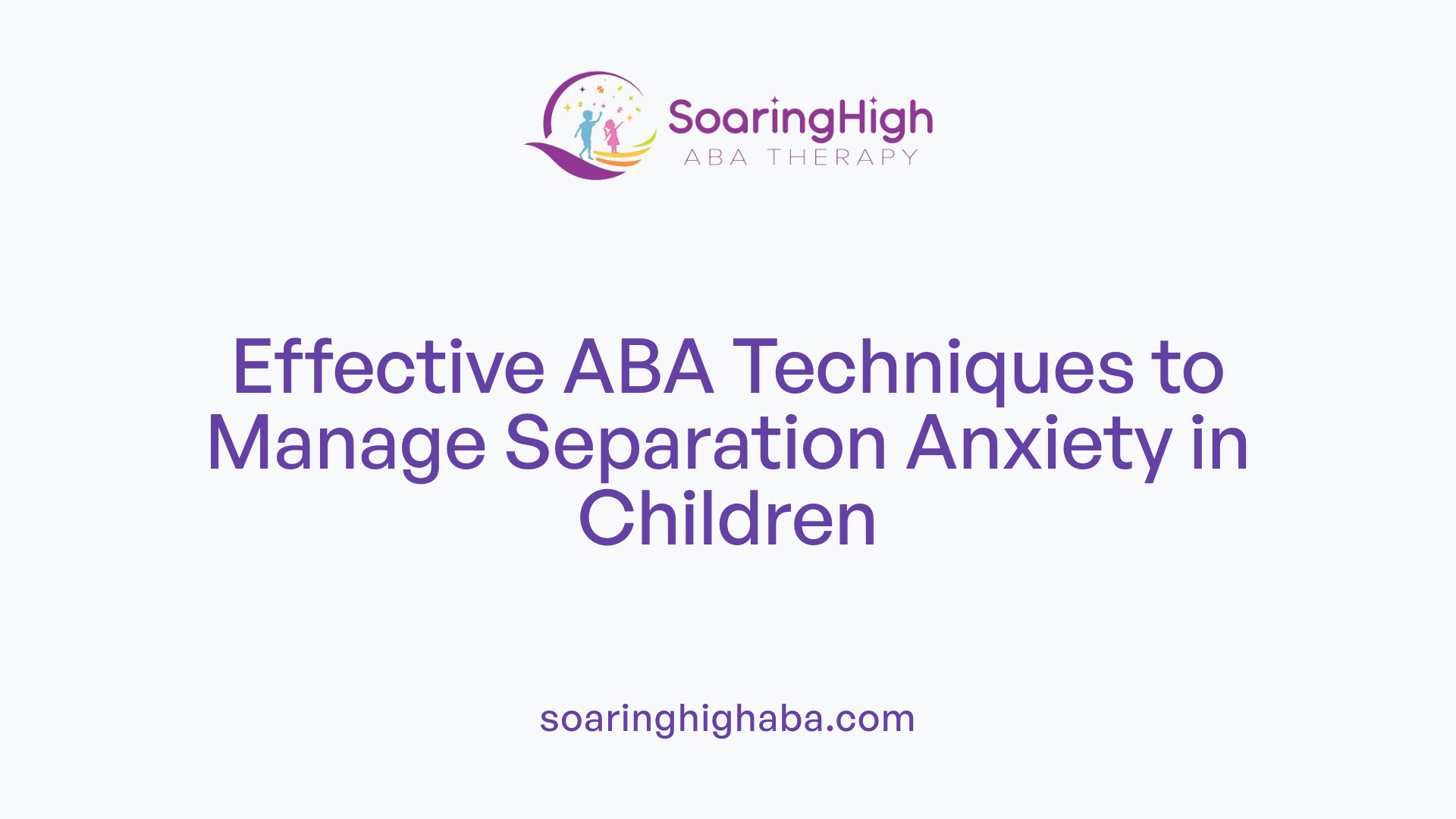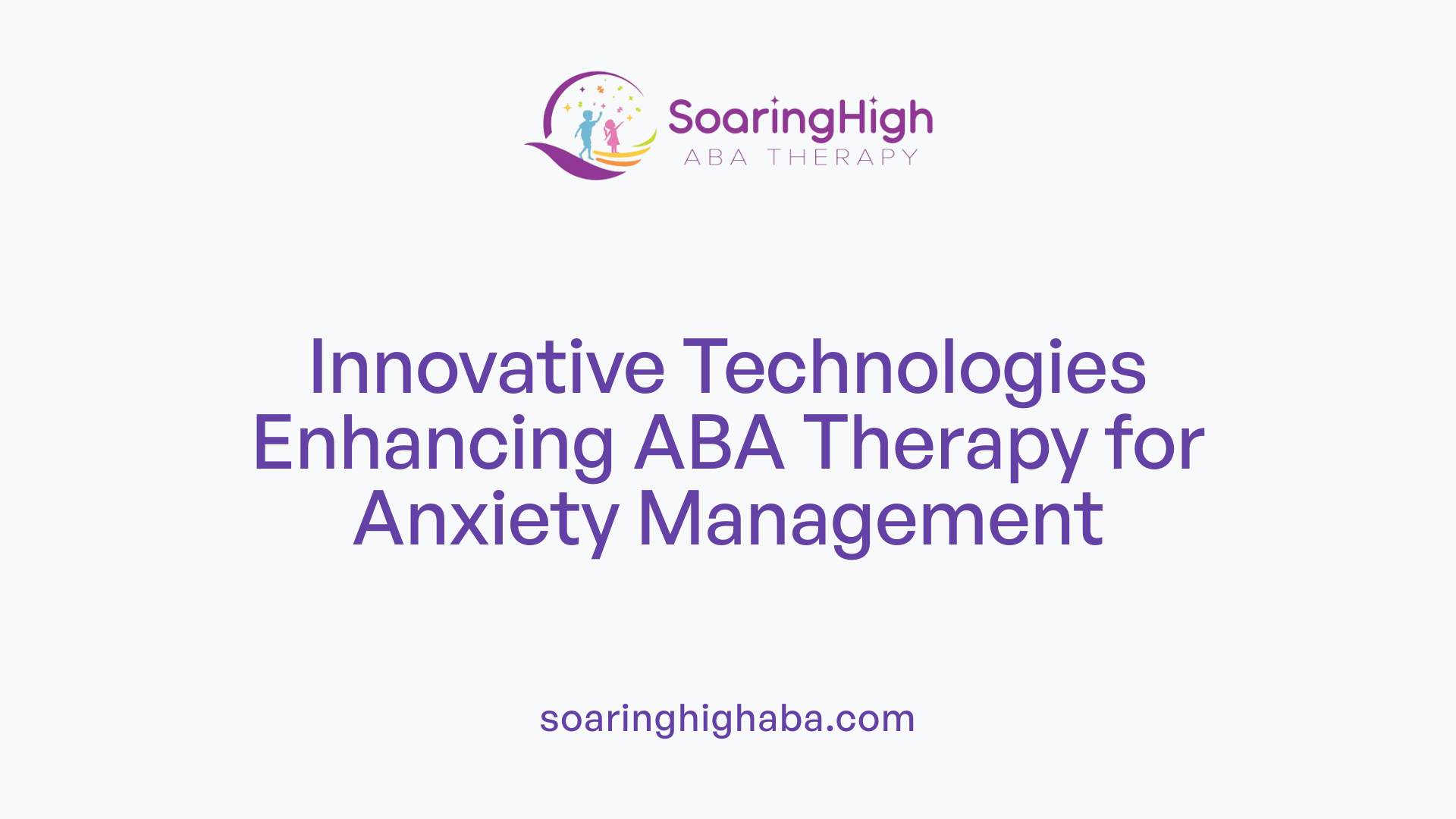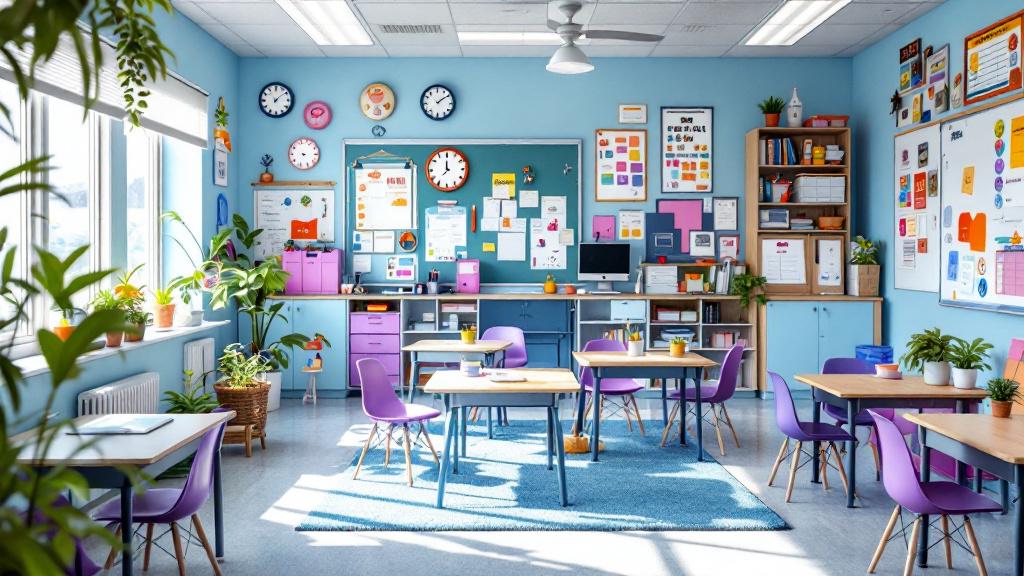Understanding Separation Anxiety in Children with Autism
Separation anxiety is a common challenge faced by children with autism spectrum disorder (ASD), manifesting as intense fears and distress when separated from primary caregivers. Recognizing the signs and underlying causes of this anxiety is crucial for implementing effective management strategies. ABA therapy has emerged as a practical and personalized approach to help children develop emotional resilience, learn coping mechanisms, and navigate their social environments more confidently.
What is Separation Anxiety in Children with Autism?
Signs and outward behaviors of separation anxiety
Children with autism experiencing separation anxiety often show noticeable behavioral clues. They might cling tightly to caregivers, become visibly distressed when routines are disrupted, or have trouble staying calm during separations. Outward behaviors can include tantrums, meltdowns, crying, or withdrawal from social interactions. These signs are typically more apparent since verbal communication difficulties mean children may not express their anxiety directly.
Physical symptoms and behavioral manifestations
Physical indicators of separation anxiety in children with autism can include stomachaches, increased heart rate, muscle tension, or difficulty sleeping. Behaviorally, children might engage in repetitive behaviors, sensory seeking or aversion activities, and display reluctance to leave the caregiver’s presence. These responses often stem from an underlying fear of separation that undermines their emotional stability.
Factors contributing to anxiety such as sensory sensitivities, routine disruptions, and communication challenges
Several factors exacerbate separation anxiety in autistic children. Sensory sensitivities make unexpected changes or unfamiliar environments overwhelming, heightening their fears. Routine disruptions remove the predictability children rely on, increasing distress. Communication difficulties hinder their ability to express feelings or understand situations, intensifying feelings of fear and uncertainty. Addressing these contributing factors with tailored strategies like visual schedules, consistent routines, and social stories can help manage their anxiety.
| Aspect | Impact | Management Approaches |
|---|---|---|
| Sensory sensitivities | Overwhelm from loud noises, bright lights, textures | Desensitization, sensory-friendly environments |
| Routine disruptions | Increased unpredictability causes distress | Visual schedules, consistent daily routines |
| Communication challenges | Difficulty expressing fears or needs | Use of visual aids, social stories, visual communication tools |
Understanding these outward signs and contributors helps caregivers and professionals develop effective interventions. Applied Behavior Analysis (ABA) therapy, for example, can create personalized plans that gradually expose children to separation scenarios, teach calming and coping techniques, and reinforce positive behaviors to build emotional resilience.
The Role of ABA Therapy in Managing Separation Anxiety

How ABA therapy supports emotional regulation and trust-building
ABA therapy plays a vital role in helping children with autism develop emotional regulation skills and build trusting relationships. By teaching self-soothing techniques and coping mechanisms, therapists enable children to manage their anxiety more effectively. The structured approach emphasizes positive reinforcement, encouraging children to try new behaviors and gradually feel more confident during separations.
Use of visual supports, social stories, and routines
Visual aids like social stories and visual schedules are fundamental tools in ABA therapy for addressing separation anxiety. These resources prepare children for upcoming absences by providing clear, predictable information about what to expect. Routine activities help establish consistency, giving children a sense of control and security. Repeated exposure to these supports reduces uncertainty, making separations less overwhelming.
Tailored intervention plans and caregiver collaboration
Every child with autism is unique, and ABA therapy emphasizes personalized plans tailored to each child's specific needs and goals. Therapists collaborate with parents and caregivers to ensure strategies are reinforced in different settings. Training caregivers in techniques such as gradual separation and positive communication encourages consistent application of interventions, which enhances their effectiveness and helps the child generalize skills.
Importance of consistency and reinforcement
Maintaining consistent routines and reinforcement strategies is critical in reducing separation anxiety. ABA therapies focus on reinforcing calm, positive behaviors through praise and rewards, fostering a sense of security. Regular routines, visual supports, and predictable transitions help children adapt more easily to separations, gradually increasing their independence. This consistency builds trust and encourages children to face separations confidently.
How can ABA therapy help manage separation anxiety in children with autism?
ABA therapy effectively manages separation anxiety by employing individualized strategies that promote trust and emotional regulation. Techniques like social stories, visual schedules, and gradual desensitization help children understand and anticipate separations, reducing fear and uncertainty. Consistent routines, positive reinforcement, and empathetic communication further support their feelings of safety.
Parent involvement is essential. When caregivers are trained to incorporate ABA strategies in daily life, the child's progress extends beyond therapy sessions, fostering a supportive environment that encourages independence.
Furthermore, ABA interventions can be combined with sensory accommodations, such as creating safe spaces for sensory regulation, to address sensory sensitivities that often accompany anxiety. Overall, the structured, personalized approach of ABA enables children to manage separation anxiety effectively, paving the way for increased confidence and emotional resilience.
Techniques and Strategies in ABA to Address Separation Anxiety

What are some strategies and techniques used in ABA therapy to address separation anxiety?
ABA therapy employs a variety of tailored strategies to help children with autism manage separation anxiety effectively. One foundational approach involves the use of visual supports such as social stories and visual schedules. These tools prepare children for upcoming separations by offering clear, predictable information, which helps reduce uncertainty and anxiety.
Gradual desensitization and exposure therapy are also core techniques. These methods involve systematically increasing the amount of time a child spends apart from caregivers. Each step is reinforced with positive rewards, helping children build confidence in their ability to cope independently.
Teaching emotional regulation and self-soothing skills is vital in helping children manage their feelings. Therapists model calm behavior and provide strategies like deep breathing or mindfulness exercises, which children can use during moments of separation or distress.
Establishing consistent routines and comforting behaviors further support children in feeling secure. Goodbyes are often structured as part of daily routines and may include comforting objects or familiar phrases to ease the transition.
Individualized reinforcement plans and close collaboration with caregivers are essential components. By reinforcing desired behaviors and working together with parents and teachers, therapists help children develop independence and resilience over time. These personalized strategies form a comprehensive approach that addresses each child’s unique needs, promoting emotional strength and reducing separation-related anxiety.
Benefits of ABA Therapy in Alleviating Separation Anxiety
How does ABA therapy promote coping and emotional regulation?
ABA therapy focuses on teaching children with autism practical coping mechanisms and emotional regulation skills. Through behavioral techniques like desensitization and role-playing, children learn to manage feelings of anxiety and stress more effectively. Therapy sessions often employ visual aids, social stories, and positive reinforcement to help children recognize and express their emotions appropriately. This structured approach enables children to develop self-soothing techniques and resilience against anxiety triggers.
How does ABA therapy help build independence and resilience?
One of the core benefits of ABA is fostering independence. By gradually teaching children skills such as self-care, communication, and social interaction, ABA supports their ability to navigate daily life with confidence. Therapy emphasizes personalized goals, which are reinforced through consistent positive feedback. As children gain more control over their behaviors and reactions, they become more resilient, better equipped to handle life's challenges, including feelings of separation.
What improvements does ABA therapy bring to early communication?
Early intervention through ABA can significantly advance communication skills, which are vital for emotional health. Enhanced communication allows children to express their needs, fears, and discomforts clearly, leading to better support from caregivers. Improved communication also helps reduce misunderstandings that may cause anxiety, especially related to separation, because children feel more understood and less isolated.
How is stress and anxiety reduced through ABA?
ABA techniques such as gradual separation, exposure therapy, and behavioral modeling are designed to reduce anxiety symptoms by creating predictable, controlled environments. Incorporating relaxation methods like deep breathing, mindfulness activities, and sensory exercises further helps children manage stress. Regular reinforcement of coping strategies makes these techniques more effective, resulting in decreased anxiety levels and increased emotional stability.
In what ways does ABA enhance social and daily living skills?
The development of social skills is crucial in reducing anxiety related to social situations or separation scenarios. ABA interventions teach children social cues, turn-taking, and appropriate responses, which ease interactions and lessen feelings of social anxiety. Additionally, improving daily living skills—like dressing, grooming, and following routines—provides children with confidence and independence, fostering overall emotional well-being.
| Aspect | How ABA Helps | Additional Notes |
|---|---|---|
| Coping & Emotional Regulation | Teaches self-soothing, emotional awareness | Uses visual aids, social stories, reinforcement |
| Building Independence | Promotes daily life skills | Focus on personalized goals |
| Communication | Improves expressive and receptive skills | Facilitates emotional expression |
| Stress & Anxiety Reduction | Gradual exposure, relaxation techniques | Combines behavioral methods with calming activities |
| Social & Daily Skills | Supports social interactions, routines | Enhances confidence and reduces social fears |
Overall, ABA therapy offers a structured, adaptable approach that can significantly alleviate separation anxiety and other related symptoms. Its emphasis on positive reinforcement and personalized interventions makes it an effective tool for helping children with autism develop resilience, independence, and emotional well-being.
The Connection Between ABA and Anxiety Management Techniques
What is the relationship between ABA therapy and anxiety management in children with autism?
ABA therapy, or Applied Behavior Analysis, is recognized as an effective approach to help children with autism manage anxiety. This therapy focuses on structured, personalized interventions that target specific anxiety triggers and challenging behaviors. Through techniques like systematic desensitization and gradual exposure, therapists help children confront and cope with situations that provoke anxiety.
Positive reinforcement is a core element, encouraging children to practice coping strategies and develop new skills for emotional regulation. In addition, relaxation methods, sensory strategies, and mindfulness exercises are integrated into ABA sessions to foster calmness and self-soothing abilities.
Family involvement is crucial, as it ensures that strategies learned during therapy are reinforced at home and in other environments. Collaboration between therapists and caregivers enhances the generalization of skills, allowing children to manage anxiety across different settings.
ABA therapy also incorporates elements of cognitive-behavioral therapy (CBT), such as social skills training and cognitive reframing. These components help children understand and modify negative thought patterns that contribute to anxiety. As a result, children gain practical tools to handle anxiety-inducing situations more independently.
Overall, ABA's individualized and measurable approach aims to reduce anxiety symptoms, improve emotional regulation, and support children in navigating social and daily challenges more effectively.
Signs, Causes, and Managing Factors of Separation Anxiety

What are the common signs and causes of separation anxiety in children with autism?
Children with autism often show clear signs of separation anxiety. These include being very clingy to parents or caregivers, showing distress when separated, or refusing to be apart from their attachment figures. Physical symptoms such as stomach aches, a racing heart, or trouble sleeping are also common outward signs of their anxiety.
In addition to these behaviors, many children may experience meltdowns or challenging behaviors when separation occurs. Sleep problems and difficulty calming down further indicate underlying anxiety.
The causes of separation anxiety in children with autism are linked to their difficulties in adapting to change. Routine disruptions, sensory sensitivities, and communication challenges can all heighten their stress. Since many rely heavily on routines and familiar caregivers for comfort, any change or temporary separation can evoke intense emotional responses.
Understanding these signs and causes helps caregivers and professionals create supportive strategies. Consistent routines, controlled separation exercises, and therapy modalities like behavioral or cognitive approaches are often used to develop coping mechanisms and reduce the anxiety associated with separation.
Incorporating Technologies and Innovative Approaches in ABA

What approaches and technologies are used in ABA therapy to manage anxiety?
ABA therapy integrates a variety of proven behavioral techniques with advanced technologies to effectively reduce anxiety in children with autism. Traditional methods like reinforcement, systematic desensitization, and exposure therapy are central to helping children develop coping skills, manage separation anxiety, and build emotional resilience.
In recent years, technological innovations have significantly enhanced ABA practices. Digital data collection tools allow therapists to track progress meticulously, tailoring interventions to each child's needs. Wearable devices monitor physiological responses such as heart rate and stress levels, providing real-time insights into the child's emotional state.
Virtual Reality (VR) and Augmented Reality (AR) present immersive environments where children can practice coping strategies and gradually face anxiety-provoking situations in a controlled setting. These tools make exposure therapy more engaging and less overwhelming.
Telehealth services expand access to ABA therapy, especially beneficial for families in remote areas or with limited transportation. Through video conferencing, therapists can deliver personalized sessions, observe behaviors, and provide immediate feedback.
Mobile applications and visual supports like social stories are also incorporated to reinforce skill generalization and routine management outside of therapy sessions. These digital aids help children develop mindfulness, emotional regulation, and social skills, further alleviating anxiety.
In summary, the combination of evidence-based behavioral techniques with innovative technologies such as wearables, VR, AR, and telehealth platforms enhances the effectiveness of ABA therapy. These tools facilitate personalized, accessible, and engaging interventions, leading to better management of anxiety and improved quality of life for children with autism.
Conclusion: Supporting Children with Autism in Overcoming Separation Anxiety
Research shows that ABA therapy can be effective in managing separation anxiety among children with autism. By focusing on personalized intervention plans, ABA addresses each child's unique needs, helping them develop coping mechanisms, emotional regulation skills, and positive behaviors. Techniques such as gradual separation, behavioral modeling, and positive reinforcement are frequently used to reduce anxiety and foster independence.
The importance of consistent strategies and multidisciplinary support cannot be overstated. Combining ABA with therapies like cognitive-behavioral therapy (CBT), occupational, or speech therapy provides a comprehensive approach, enhancing overall outcomes. Visual aids like social stories and structured routines help children and adults anticipate and manage separation experiences more comfortably.
Early intervention plays a vital role. Families are encouraged to get involved by reinforcing learned skills in everyday situations. Active parental participation helps generalize coping strategies beyond therapy sessions, promoting resilience and confidence.
Ultimately, structured, individualized, and multidisciplinary approaches are essential for helping children and adults with autism navigate separation and other challenges. Such strategies aim not only to reduce anxiety but also to empower individuals to achieve greater independence and emotional resilience, supporting their well-being and quality of life.
Fostering Emotional Resilience and Independence
In conclusion, ABA therapy stands out as a highly effective, adaptable approach to managing separation anxiety in children with autism. By focusing on personalized interventions that combine behavioral techniques, emotional regulation skills, and family collaboration, ABA helps children build resilience and independence. Early and consistent application of these strategies, supported by innovative technologies and multidisciplinary support, can significantly reduce anxiety symptoms, leading to a more fulfilling and autonomous life for children with autism. Encouraging active family involvement and ongoing therapy ensures sustained progress and emotional well-being, paving the way for a hopeful future.
References
- Autism and Anxiety: A Comprehensive Guide to How ABA Helps
- Addressing Separation Anxiety in Children With Autism
- Understanding and Managing Separation Anxiety in Adults with ...
- Leveraging ABA Therapy for Anxiety - Flywheel Centers
- Handling Separation Anxiety in Children with Autism - Childwise ABA
- Addressing Separation Anxiety in Your Child with Autism
- Autism and Anxiety: A Comprehensive Guide to How ABA Helps
- treatment of anxiety in individuals with autism spectrum disorders
- Addressing Separation Anxiety in Children With Autism





































































































